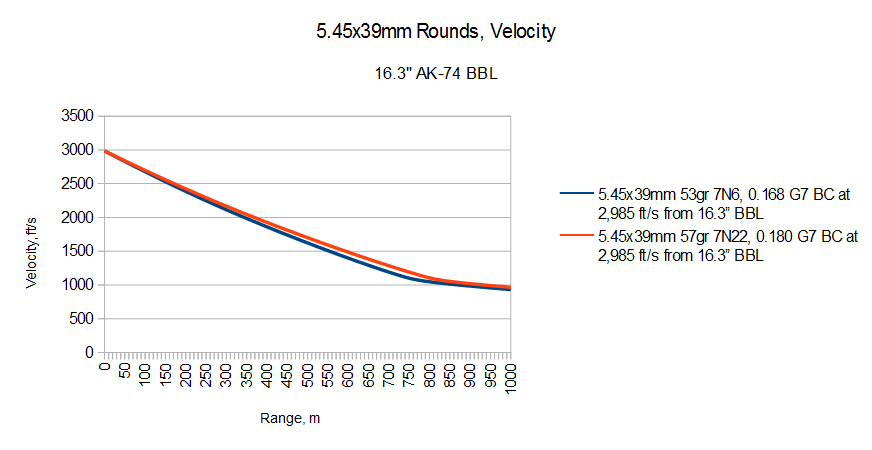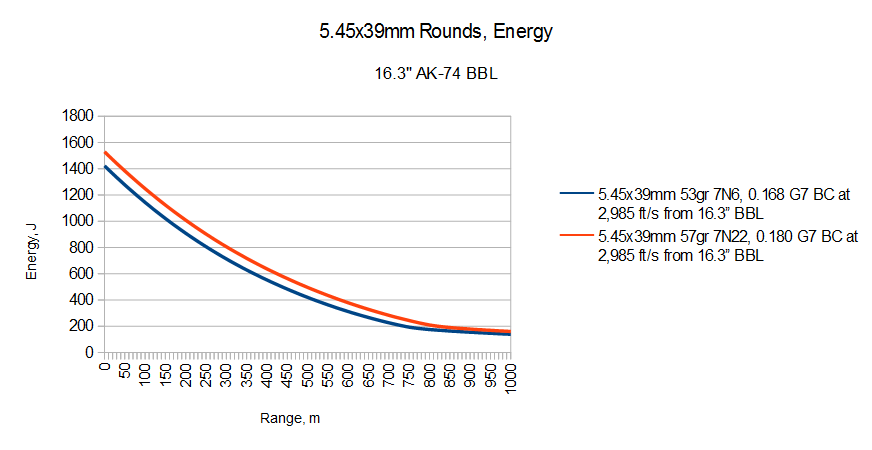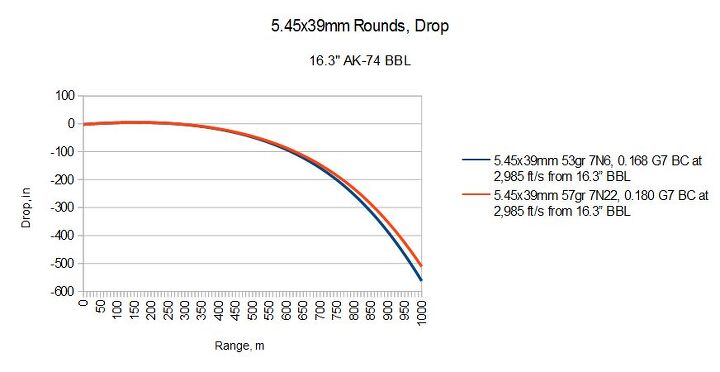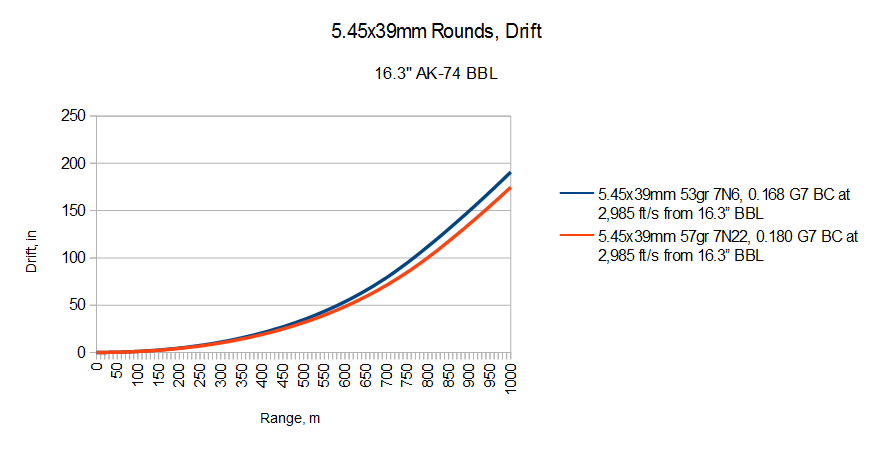In the late 1950s, after the first public demonstrations of the AR-15 and its new small caliber, high velocity cartridge, the Soviet Union took notice of the radical developments in military .22 caliber rounds in the United States. By 1959, four years before the adoption of the AR-15 as the M16 by the US Army, Soviet ballisticians were already testing Soviet-made replica 55gr spitzer FMJ bullets fired at over 3,000 ft/s from modified necked down 7.62x39mm cases. This program for a new small caliber high velocity lasted into the late 1960s, but it wasn’t until the mid-1970s that the 5.45x39mm caliber was eventually issued alongside the AK-74 rifle, a modified but significantly more effective variant of the previous 7.62x39mm AKM assault rifle.
Let’s get into the ballistics:
Despite its lighter bullet, the 5.45x39mm round retains its energy better than 5.56mm from comparable barrels, thanks to an excellent, carefully designed bullet shape. Even better, 5.45x39mm rounds are typically lighter, with the steel-cased 53gr 7N6 ball round weighing about 10.7 grams per shot. Despite its superior ballistics, however, the 5.45x39mm caliber has not seen the benefit of advanced antipersonnel projectile designs such as the M855A1 EPR and Mk. 318 SOST in the US, and therefore typically possesses inferior lethality. Russian armor piercing rounds such as the 7N22 and 7N24 are, however, very effective against body armor.
Note: All ballistic calculations are done with JBM’s Trajectory calculator, using the ballistic coefficient appropriate to the projectile being modeled. In this case, the calculations were done assuming an AK as the parent rifle. Also, keep in mind that there is no single true velocity for a given round; velocity can vary due to a large number of factors, including ambient temperature and chamber dimensions. Instead, I try to use nominal velocity figures that are representative of the capability of the round in question.
 Your Privacy Choices
Your Privacy Choices




